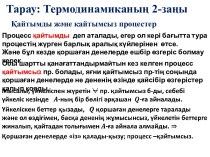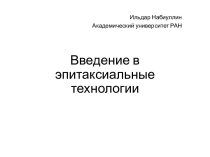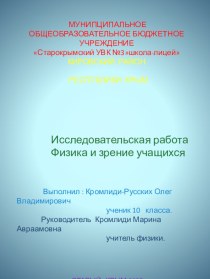- Главная
- Разное
- Бизнес и предпринимательство
- Образование
- Развлечения
- Государство
- Спорт
- Графика
- Культурология
- Еда и кулинария
- Лингвистика
- Религиоведение
- Черчение
- Физкультура
- ИЗО
- Психология
- Социология
- Английский язык
- Астрономия
- Алгебра
- Биология
- География
- Геометрия
- Детские презентации
- Информатика
- История
- Литература
- Маркетинг
- Математика
- Медицина
- Менеджмент
- Музыка
- МХК
- Немецкий язык
- ОБЖ
- Обществознание
- Окружающий мир
- Педагогика
- Русский язык
- Технология
- Физика
- Философия
- Химия
- Шаблоны, картинки для презентаций
- Экология
- Экономика
- Юриспруденция
Что такое findslide.org?
FindSlide.org - это сайт презентаций, докладов, шаблонов в формате PowerPoint.
Обратная связь
Email: Нажмите что бы посмотреть
Презентация на тему Compass - magnetic and gyro
Содержание
- 2. Deviation of MagneticCompasses© STC AVANT 2015PREPARED BY CAPT Y. BYCHKOVKSIY COMPASSES
- 3. STCW – 78, as amendedRequirements, stated in
- 4. SOLAS – 74, as amendedRequirements, stated in
- 5. Panama Maritime AuthorityRequirements, stated in Merchant Marine
- 6. REPUBLIC OF THE MARSHALL ISLANDS Marine
- 7. © STC AVANT 2015PREPARED BY CAPT Y. BYCHKOVKSIY COMPASSESMagnetic compasses
- 8. © STC AVANT 2015PREPARED BY CAPT Y.
- 9. © STC AVANT 2015PREPARED BY CAPT Y.
- 10. © STC AVANT 2015PREPARED BY CAPT Y.
- 11. © STC AVANT 2015PREPARED BY CAPT Y.
- 12. © STC AVANT 2015PREPARED BY CAPT Y.
- 13. © STC AVANT 2015PREPARED BY CAPT Y.
- 14. © STC AVANT 2015PREPARED BY CAPT Y.
- 15. © STC AVANT 2015PREPARED BY CAPT Y.
- 16. © STC AVANT 2015PREPARED BY CAPT Y.
- 17. © STC AVANT 2015PREPARED BY CAPT Y.
- 18. © STC AVANT 2015PREPARED BY CAPT Y.
- 19. © STC AVANT 2015PREPARED BY CAPT Y.
- 20. © STC AVANT 2015PREPARED BY CAPT Y.
- 21. © STC AVANT 2015PREPARED BY CAPT Y.
- 22. © STC AVANT 2015PREPARED BY CAPT Y.
- 23. © STC AVANT 2015PREPARED BY CAPT Y.
- 24. © STC AVANT 2015PREPARED BY CAPT Y. BYCHKOVKSIY COMPASSESCalculation of deviation
- 25. Скачать презентацию
- 26. Похожие презентации






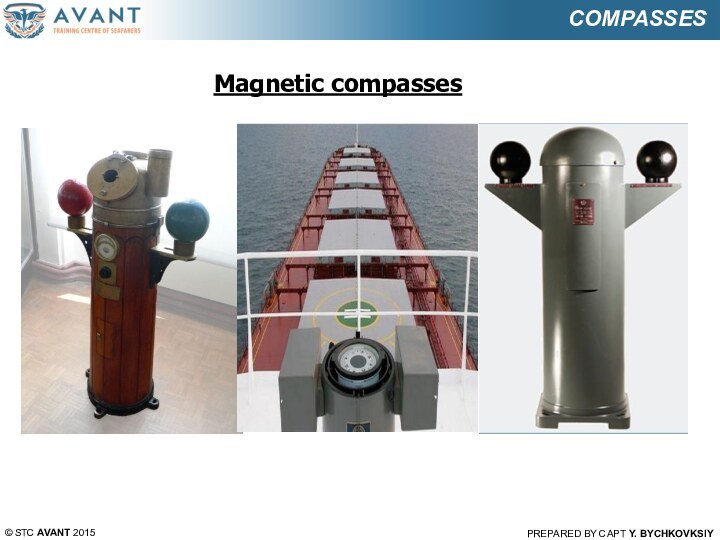




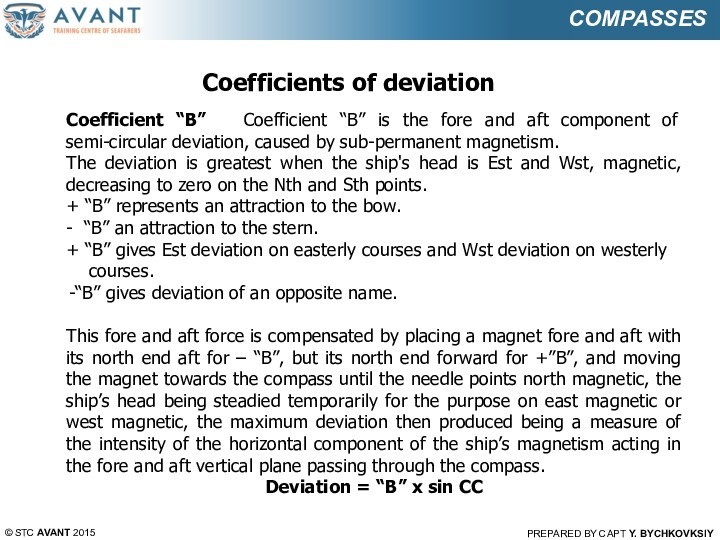

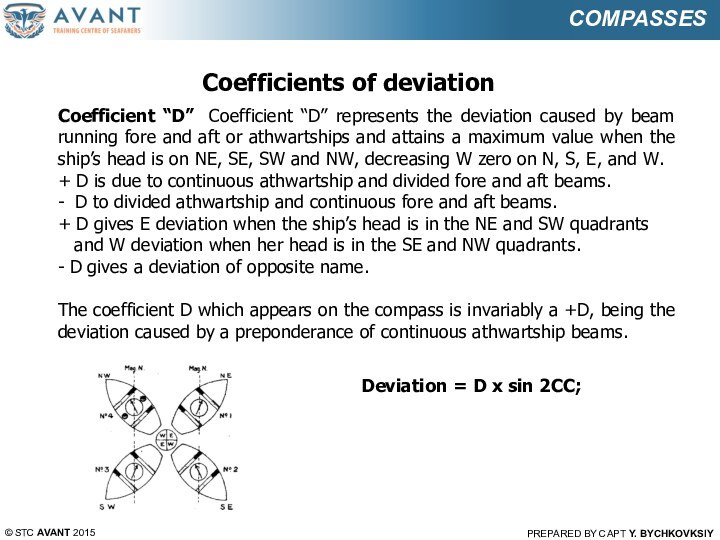
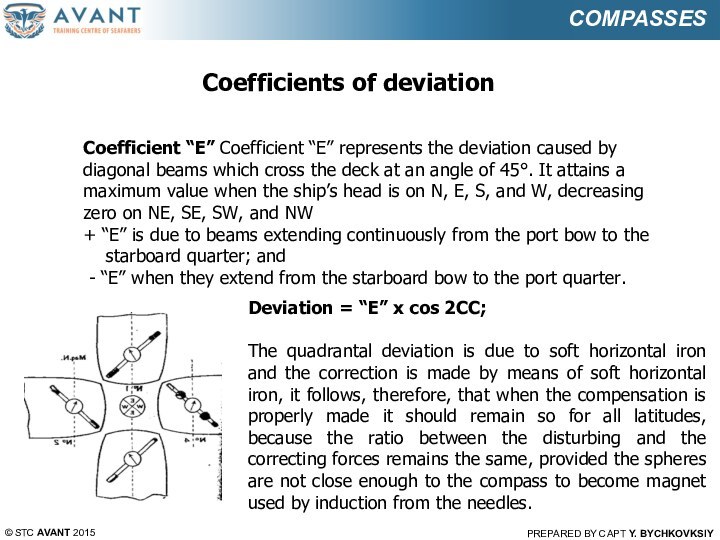

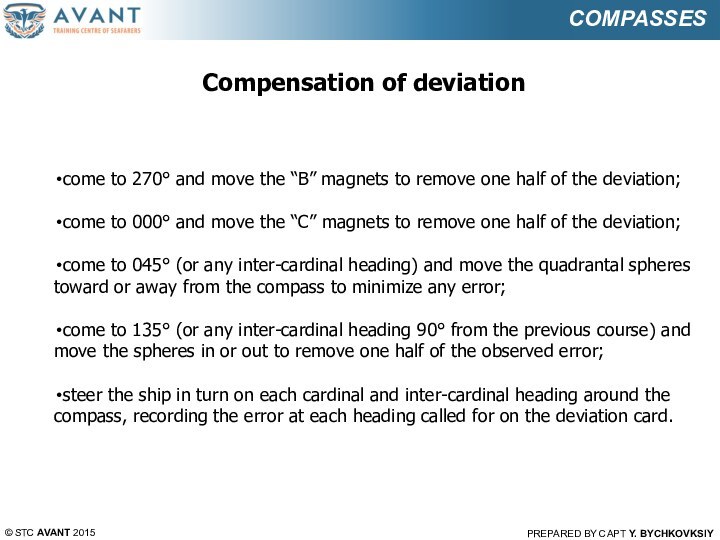
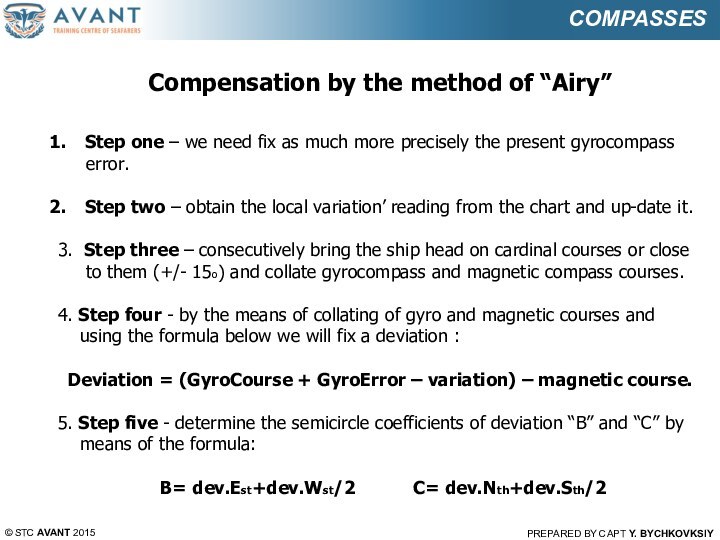







Слайд 3
STCW – 78, as amended
Requirements, stated in Tables
A-II/1, A-II/2 :
“ .... Compass - magnetic and
gyro …..”Knowledge of the principles of magnetic and gyro compasses. Ability to determine errors of the magnetic and gyro compasses, using celestial and terrestrial means, and to allow for such errors.”
© STC AVANT 2015
PREPARED BY CAPT Y. BYCHKOVKSIY
COMPASSES
Слайд 4
SOLAS – 74, as amended
Requirements, stated in Chapter
V, Regulation 19 :
Carriage requirements for shipborne navigational
systems and equipment” 2.1 All ships irrespective of size shall have:
.1 a properly adjusted standard magnetic compass, or other means, independent of any
power supply to determine the ship's heading and display the reading at the main
steering position;
.2 a pelorus or compass bearing device, or other means, independent of any power
supply to take bearings over an arc of the horizon of 360°;
.3 means of correcting heading and bearings to true at all times…….”
© STC AVANT 2015
PREPARED BY CAPT Y. BYCHKOVKSIY
COMPASSES
Слайд 5
Panama Maritime Authority
Requirements, stated in Merchant Marine Circular
# 138 :
Subject : Magnetic compasses
4. When to
Adjust Compasses.© STC AVANT 2015
PREPARED BY CAPT Y. BYCHKOVKSIY
COMPASSES
……………………………………………………………………
e) a maximum period of one (1) year has elapsed since the date of the last adjustment and record of compass deviations has not been properly maintained or the record of deviations are excessive or when the compass shows physical defects,
f) deviation exceeds five (5) degrees taking into account the variation of the place and the method used.
Слайд 6
REPUBLIC OF THE MARSHALL ISLANDS
Marine Notice
No. 2-011-32 :
SUBJECT: Magnetic Compasses Adjustment.
2.1 Magnetic compasses
should be adjusted when:.1 they are first installed;
.2 they become unreliable;
.3 the observed error consistently exceeds the allowed limit of 5° on one or more
headings;
.4 after dry docking, or after repairs or structural alterations have been made to
the ship that could affect its permanent and / or induced magnetism
.5 electrical or magnetic equipment close to the compass is installed, removed, or
altered;
.6 after one (1) year from when the compass was last adjusted if the required
record of compass deviations has not been properly maintained or the record
of deviations are excessive; and/or
.7 when deemed necessary by the Master.
© STC AVANT 2015
PREPARED BY CAPT Y. BYCHKOVKSIY
COMPASSES
Слайд 8
© STC AVANT 2015
PREPARED BY CAPT Y. BYCHKOVKSIY
COMPASSES
Magnetic compasses
The compass can be corrected in three ways.
First the lubber line can be adjusted so that it is aligned with the direction in which the ship travels, then the effects of permanent magnets can be corrected for by small magnets fitted within the case of the compass. The effect of ferromagnetic materials in the compass's environment can be corrected by two iron balls mounted on either side of the compass binnacle, this device is designed for compensation of deviation and located inside of a binnacle. The coefficient A representing the error in the lubber line, while B, C the ferromagnetic effects and D, E the non-ferromagnetic component
Слайд 9
© STC AVANT 2015
PREPARED BY CAPT Y. BYCHKOVKSIY
COMPASSES
Magnetic compasses
A ship under construction or repair will acquire
permanent magnetism due to hammering and vibration while sitting stationary in the Earth’s magnetic field.In addition to its permanent magnetism, a ship acquires induced magnetism when placed in the Earth’s magnetic field. The magnetism induced in any given piece of soft iron is a function of the field intensity, the alignment of the soft iron in that field, and the physical properties and dimensions of the iron. This induced magnetism may add to, or subtract from, the permanent magnetism already present in the ship, depending on how the ship is aligned in the magnetic field.
The magnetism in the various structures of a ship, which tends to change as a result of cruising, vibration, or aging, but which does not alter immediately so as to be properly termed induced magnetism, is called subpermanent magnetism.
Слайд 10
© STC AVANT 2015
PREPARED BY CAPT Y. BYCHKOVKSIY
COMPASSES
Main Reasons of Compasses Deviation
1. magnetic cargo
2.
hoisting booms 3. cable reels
4. metal doors in wheelhouse
5. knives or tools near binnacle
6. electric motors
7. magnetic controllers
8. gyro repeaters
9. loudspeakers
10. electric indicators
11. electric welding
12. large power circuits (magnetic grabs)
13. searchlights or flashlights
14. electrical control panels or switches
15. minesweeping power circuits
Слайд 11
© STC AVANT 2015
PREPARED BY CAPT Y. BYCHKOVKSIY
COMPASSES
Types of deviation
1. Round deviation 2. Semicircular
deviation 3. Quandrantal deviation Coefficients of deviation
Coefficient “A” Coefficient “A” represents a deviation of the same name and amount on all courses. It is really an index error, due usually to a mechanical defect in the compass, such as the magnetic axis of the needles not being parallel to a line drawn through the north and south points of the card, or the card itself not being accurately centred and graduated, the lubber line misplaced, or an error in computing the magnetic bearing of the distant object by which the compass was adjusted.
The value of A is the mean of the deviation on the cardinal and inter-cardinal points, and takes the name of the greater, + A when Est, — A when Wst. In good compasses it is small in amount and causes no practical inconvenience.
Слайд 12
© STC AVANT 2015
PREPARED BY CAPT Y. BYCHKOVKSIY
COMPASSES
Coefficients of deviation
Coefficient “B” Coefficient “B” is
the fore and aft component of semi-circular deviation, caused by sub-permanent magnetism. The deviation is greatest when the ship's head is Est and Wst, magnetic, decreasing to zero on the Nth and Sth points.
+ “B” represents an attraction to the bow.
- “B” an attraction to the stern.
+ “B” gives Est deviation on easterly courses and Wst deviation on westerly
courses.
“B” gives deviation of an opposite name.
This fore and aft force is compensated by placing a magnet fore and aft with its north end aft for – “B”, but its north end forward for +”B”, and moving the magnet towards the compass until the needle points north magnetic, the ship’s head being steadied temporarily for the purpose on east magnetic or west magnetic, the maximum deviation then produced being a measure of the intensity of the horizontal component of the ship’s magnetism acting in the fore and aft vertical plane passing through the compass.
Deviation = “B” x sin CC
Слайд 13
© STC AVANT 2015
PREPARED BY CAPT Y. BYCHKOVKSIY
COMPASSES
Coefficients of deviation
Coefficient “C” This is all represented
by the athwartshaip component of semi-circular deviation due to sub-permanent magnetism, the deviation being greatest when the ship’s head is N. and S. magnetic, decreasing to zero on the E. and W. points. +C represents an attraction to starboard.
- C to port.
+ C gives E. dev. on northerly courses and W. dev. on southerly courses.
- C gives deviations of an opposite name.
This athwartship force is compensated by a magnet placed athwartships with its north end to starboard for +C but to port for - C, and moving the magnet towards the compass until the needle points north magnetic, the ship’s head being steadied temporarily on north or south magnetic as the maximum deviation then produced is a measure of the intensity of the ship’s magnetism in the athwartship vertical plane passing through the compass.
Deviation = “C” x cos CC
Слайд 14
© STC AVANT 2015
PREPARED BY CAPT Y. BYCHKOVKSIY
COMPASSES
Coefficients of deviation
Coefficient “D” Coefficient “D” represents the
deviation caused by beam running fore and aft or athwartships and attains a maximum value when the ship’s head is on NE, SE, SW and NW, decreasing W zero on N, S, E, and W.+ D is due to continuous athwartship and divided fore and aft beams.
- D to divided athwartship and continuous fore and aft beams.
+ D gives E deviation when the ship’s head is in the NE and SW quadrants
and W deviation when her head is in the SE and NW quadrants.
- D gives a deviation of opposite name.
The coefficient D which appears on the compass is invariably a +D, being the deviation caused by a preponderance of continuous athwartship beams.
Deviation = D x sin 2CC;
Слайд 15
© STC AVANT 2015
PREPARED BY CAPT Y. BYCHKOVKSIY
COMPASSES
Coefficients of deviation
Coefficient “E” Coefficient “E” represents the
deviation caused by diagonal beams which cross the deck at an angle of 45°. It attains a maximum value when the ship’s head is on N, E, S, and W, decreasing zero on NE, SE, SW, and NW + “E” is due to beams extending continuously from the port bow to the
starboard quarter; and
- “E” when they extend from the starboard bow to the port quarter.
Deviation = “E” x cos 2CC;
The quadrantal deviation is due to soft horizontal iron and the correction is made by means of soft horizontal iron, it follows, therefore, that when the compensation is properly made it should remain so for all latitudes, because the ratio between the disturbing and the correcting forces remains the same, provided the spheres are not close enough to the compass to become magnet used by induction from the needles.
Слайд 16
© STC AVANT 2015
PREPARED BY CAPT Y. BYCHKOVKSIY
COMPASSES
Compensation of deviation
if there is a sea running,
steer course 000° and adjust the heeling magnet to decrease oscillations to a minimum;come to course 090°; when steady on course 090°, for at least two minutes, insert, remove, or move fore-and-aft “B” magnets to remove ALL deviation;
come to a heading of 180°; insert, remove, or move athwartships “C” magnets to remove ALL deviation;
Слайд 17
© STC AVANT 2015
PREPARED BY CAPT Y. BYCHKOVKSIY
COMPASSES
Compensation of deviation
come to 270° and move the
“B” magnets to remove one half of the deviation; come to 000° and move the “C” magnets to remove one half of the deviation;
come to 045° (or any inter-cardinal heading) and move the quadrantal spheres toward or away from the compass to minimize any error;
come to 135° (or any inter-cardinal heading 90° from the previous course) and move the spheres in or out to remove one half of the observed error;
steer the ship in turn on each cardinal and inter-cardinal heading around the compass, recording the error at each heading called for on the deviation card.
Слайд 18
© STC AVANT 2015
PREPARED BY CAPT Y. BYCHKOVKSIY
COMPASSES
Compensation by the method of “Airy”
Step one –
we need fix as much more precisely the present gyrocompass error.
Step two – obtain the local variation’ reading from the chart and up-date it.
3. Step three – consecutively bring the ship head on cardinal courses or close
to them (+/- 15o) and collate gyrocompass and magnetic compass courses.
4. Step four - by the means of collating of gyro and magnetic courses and
using the formula below we will fix a deviation :
Deviation = (GyroCourse + GyroError – variation) – magnetic course.
5. Step five - determine the semicircle coefficients of deviation “B” and “C” by
means of the formula:
B= dev.Est+dev.Wst/2 C= dev.Nth+dev.Sth/2
Слайд 19
© STC AVANT 2015
PREPARED BY CAPT Y. BYCHKOVKSIY
COMPASSES
Compensation by the method of “Airy”
6. Step six
- after berthing and having a stabile magnetic condition of the ship we will calculate the deviation’ value on the magnetic course
alongside a dock by the formula :
Deviation ”B”= B x sin C ;
Deviation “C”= C x cos C.
7. Step seven - having the calculated values of deviation B & C, we will open a deviation’ compensation device inside a binnacle and will commence a whole procedure of semicircle deviation’ compensation.
8. Step eight – by means of longitudinal and athwartship magnets we will compensate a semicircular deviation by the simplest moving of the magnets up and down the slops or rotating an appropriate compensation knob. The special attention to be paid to the polarity of coefficients “B” and “C”.
Слайд 20
© STC AVANT 2015
PREPARED BY CAPT Y. BYCHKOVKSIY
COMPASSES
Compensation by the method of “Airy”
9. Step nine
– on completion of compensation we shall determine the residual values of deviation (coefficients “B” and “C”). Having in mind that coefficient
“A” and quadrantal coefficient “D” and “E” are subjects of a small changes
during a voyage, we can assume that they are permanent and calculate their
values based on the previous deviation’ table readings and issue a new
deviation table.
10. Step ten – compensation of semicircle, quadrantal, Flinders and heeling
deviation.
It is important to understand what to do on completion of deviation’
determine, because a wrong inserting of a magnet could make a whole
picture much worse, as it being before. For this reason, Tables
1,2,3,4,5,6 are attached.
Слайд 21
© STC AVANT 2015
PREPARED BY CAPT Y. BYCHKOVKSIY
COMPASSES
Compensation’ tables for coefficients “B” & “C”
Table 1
coefficient “B” Table 2 coefficient “C”
Слайд 22
© STC AVANT 2015
PREPARED BY CAPT Y. BYCHKOVKSIY
COMPASSES
Compensation’ tables for coefficients “D” & “E”
Table 3
coefficient “D” Table 4 coefficient “E”







